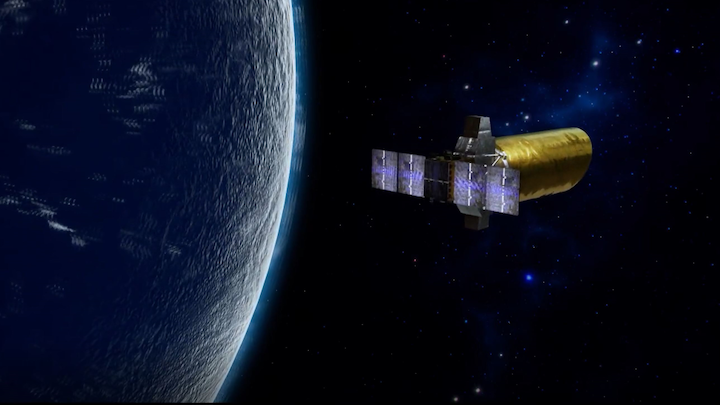3.06.2022
The mission would focus on finding "nearby" worlds with the potential to host life.

A proposed Chinese mission would look for nearby potentially habitable alien worlds by launching a spacecraft to make ultraprecise measurements of how orbiting planets make a star wobble.
For this mission, called the Closeby Habitable Exoplanet Survey (CHES), the scientists would use a method called micro-arcsecond relative astrometry. This technique involves taking ultraprecise measurements of the positions and movements of stars compared with a set of background reference stars to detect the perturbations of a star resulting from the gravitational influence of exoplanets as they orbit their stars.
This method would provide estimates of the masses of exoplanets and the distance at which they orbit their stars, which, in turn, might reveal if these exoplanets have the potential to host life. The European Space Agency's Gaia space telescope is using the same method to create a 3D map of a billion stars in the Milky Way. (Other planet-seeking missions, such as NASA's Transiting Exoplanet Survey Satellite, use a different technique, called the transit method, which looks for dips in the luminosity of a star as planets cross it. However, this method requires planets to orbit edge-on with respect to the observer.)
CHES would be much more focused than Gaia, targeting 100 sun-like stars within 10 parsecs, or 33 light-years, of Earth and would be able to detect potentially Earth-like planets in the habitable zones around those stars.
While surveying a relatively narrow selection of stars, CHES would be able to comprehensively study those systems for exoplanets.
"The hunt for habitable worlds about nearby sun-like stars will be a great breakthrough for humanity, and will also help humans visit those Earth twins and expand our living space in the future," Ji Jianghui, a research professor from the Purple Mountain Observatory at the Chinese Academy of Sciences (CAS) and principal investigator of the CHES mission, told Space.com. "As of today, over 5,000 exoplanets have been discovered and confirmed so far, including around 50 Earth-like planets in the habitable zone, but most of them are hundreds of light-years away from Earth."
CHES would carry out its work from sun-Earth Lagrange Point 2, about 930,000 miles (1.5 million kilometers) from Earth, where Gaia, Spektr-RG and the James Webb Space Telescope are currently operating.
"CHES would be a fabulous addition to exoplanet exploration," said Elizabeth Tasker, an associate professor at the Japan Aerospace Exploration Agency. "While the potential number of targets is small, the measurement of planet mass for worlds orbiting our neighboring K-, G- and F-type stars would be a valuable addition to our current data and a step towards identifying habitable worlds."
Measuring planets' masses would provide valuable data about the diversity and formation of our planetary neighbors, Tasker said.
"Although CHES cannot probe the surface of these planets to see if they host an Earth-like environment, the direct measurement of mass provides an important indicator as to which planets could, or definitely could not, be Earth-like," Tasker told Space.com. "Higher-mass planets will draw down a thicker atmosphere than the Earth, potentially containing gasses such as hydrogen and helium, which are excellent at trapping heat."
The potential habitability of terrestrial planets from discoveries made by CHES could be further investigated by other teams. For a planet that makes observable transits across its star, the spectra of light that passes through an exoplanet's atmosphere could be analyzed to reveal information about its composition.
The mission appears to be competing with another exoplanet proposal from the Shanghai Astronomical Observatory, also under the CAS. This so-called Earth 2.0 mission would use the transit method to monitor 1.2 million dwarf stars, in an attempt to detect exoplanets and narrow the search for potential Earth twins. This mission would also operate from sun-Earth Lagrange Point 2.
Both proposals are part of a third round of the Strategic Priority Research Program under CAS. These two proposals, along with mission proposals in other areas — including extreme energy physics, planetary science, heliophysics and Earth observation — are expected to undergo review soon.
Quelle: SC

